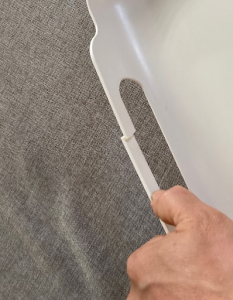Injection molding is a widely used manufacturing process that allows for the efficient production of complex plastic parts. However, even with advanced technology and meticulous attention to detail, defects can occasionally occur during the injection molding process. These defects can impact the overall quality and functionality of the molded parts, potentially leading to increased costs and production delays.
Warpage (Molding Defect)
Warpage is the distortion or bending of a molded part caused by non-uniform cooling or improper part design. Introduction Warpage is a prevalent defect encountered in injection molding, characterized by the distortion or bending of molded parts. This defect can compromise the functionality, aesthetics, and overall quality of the final product. Understanding the root causes...
Sink Marks
Sink Marks are depressions or shrinkage marks that occur on the surface of a molded part due to variations in cooling rates. Introduction Sink marks are a common defect encountered in the injection molding process, characterized by depressions or shrinkage marks on the surface of molded parts. These marks can affect both the aesthetics and...
Flash
Flash is excess material that extends beyond the intended part geometry, typically found along the parting line or at the edges of the mold. Introduction Flash is a common defect encountered in injection molding, characterized by excess material that extends beyond the intended part geometry. It not only compromises the aesthetics of the molded parts...
Short Shots
A short shot is incomplete filling of the mold cavity, resulting in a partially formed or undersized part. Introduction Short shots are a common defect encountered in injection molding, characterized by the incomplete filling of the mold cavity, resulting in partially formed or undersized parts. This defect not only affects the functionality and structural integrity...
Weld Lines

Weld lines are visible lines or seams that occur when two or more molten material flow fronts meet and rejoin during the injection molding process. Introduction Weld lines are a common defect encountered in injection molding, characterized by visible lines or seams on the surface of molded parts. These lines occur when two or more...
Splay Marks
Splay marks are circular or streak-like patterns on the surface of the part caused by moisture or other contaminants present in the material. Introduction Splay marks are a common defect encountered in injection molding, characterized by streaks, discoloration, or surface imperfections on the molded parts. These marks occur due to the presence of trapped moisture...
Jetting
Jetting is a defect characterized by erratic material flow, resulting in a visible "jet" or streak on the surface of the molded part. Introduction Jetting is a common defect encountered in injection molding, characterized by the formation of irregular, streak-like patterns on the surface of molded parts. This defect occurs when the molten material is...
Burn Marks
Burn marks are discoloration or blackened areas on the surface of the part caused by excessive heat or the presence of trapped air during the molding process. Introduction Burn marks are a common defect encountered in injection molding, characterized by discoloration or darkened areas on the surface of molded parts. These marks occur when the...
Voids and Air Traps
Voids and air traps are empty spaces or air pockets within the molded part caused by inadequate venting or trapped air during the injection process. Introduction Voids and air traps are common defects encountered in injection molding, characterized by the presence of empty spaces, air pockets, or incomplete filling within the molded parts. These defects...
Overpacking
Overpacking is excessive pressure or force applied during the packing phase, leading to part deformation, flash, or other cosmetic issues. Introduction Overpacking is a common defect encountered in injection molding, characterized by excessive material filling and pressure beyond the optimal level required to produce a high-quality molded part. This defect occurs when the injection process...
Delamination
Delamination is a separation or layering of the molded part, often caused by poor material compatibility or inadequate adhesion between layers. Introduction Delamination is a common defect encountered in injection molding, characterized by the separation or splitting of layers within the molded part. This defect occurs when there is a lack of proper bonding between...
Warpage (Molding Defect)
Warpage is the distortion or bending of a molded part caused by non-uniform cooling or improper part...
Sink Marks
Sink Marks are depressions or shrinkage marks that occur on the surface of a molded part due to variations...
Flash
Flash is excess material that extends beyond the intended part geometry, typically found along the parting...
Short Shots
A short shot is incomplete filling of the mold cavity, resulting in a partially formed or undersized...
Weld Lines
Weld lines are visible lines or seams that occur when two or more molten material flow fronts meet and...
Splay Marks
Splay marks are circular or streak-like patterns on the surface of the part caused by moisture or other...
Jetting
Jetting is a defect characterized by erratic material flow, resulting in a visible "jet" or streak on...
Burn Marks
Burn marks are discoloration or blackened areas on the surface of the part caused by excessive heat...
Voids and Air Traps
Voids and air traps are empty spaces or air pockets within the molded part caused by inadequate venting...
Overpacking
Overpacking is excessive pressure or force applied during the packing phase, leading to part deformation,...

